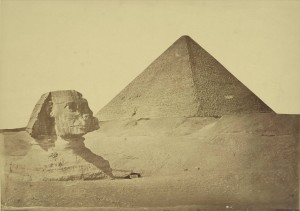This is how they built the pyramids
The tomb art tells all — Why hadn’t we thought before to just look at the art…

Scientists Have an Answer to how the Egyptian Pyramids Were Built
By James MacDonald
“Using sand, water, and a scale model of an ancient Egyptian transport sled, a team of Dutch engineers have answered an enduring question: “How on Earth were the pyramids of Egypt built?” The ancient Egyptians had neither wheels nor work animals, so the giant blocks, each weighing at least 2.5 tons, had to be moved through human muscle power alone. But until recently, nobody really knew how. The answer, it turns out, is simply water. Evidence suggests that the blocks were first levered onto wooden sleds and then hauled up ramps made of sand. However, dry sand piles up in front of a moving sled, increasing friction until the sled is nearly impossible to pull. Wet sand reduces friction dramatically beneath the sled runners, eliminating the sand piles and making it possible for a team of people to move massive objects.
The key, as the Dutch team proved, is getting the water-to-sand ratio just right; too much water and the sled bogs down. Despite the seemingly obvious answer—tomb art discovered in the 19th century depicts laborers pouring water in front of a block-hauling team—debate over how the pyramids were built is almost as ancient as the pyramids themselves. A 1956 article in the journal Archaeology describes how speculation about construction methods dates back to ancient Greece and continues unabated. A quick search of the JSTOR archives reveals thousands of articles on the topic, with many focused on the use of rollers or even cranes to haul the blocks. A 2003 article in the journal Technology and Culture does pursue the water-as-lubricant hypothesis, providing some theoretical physical calculations but without providing much supporting evidence beyond the tomb art…”
For the complete article click here.
Share

